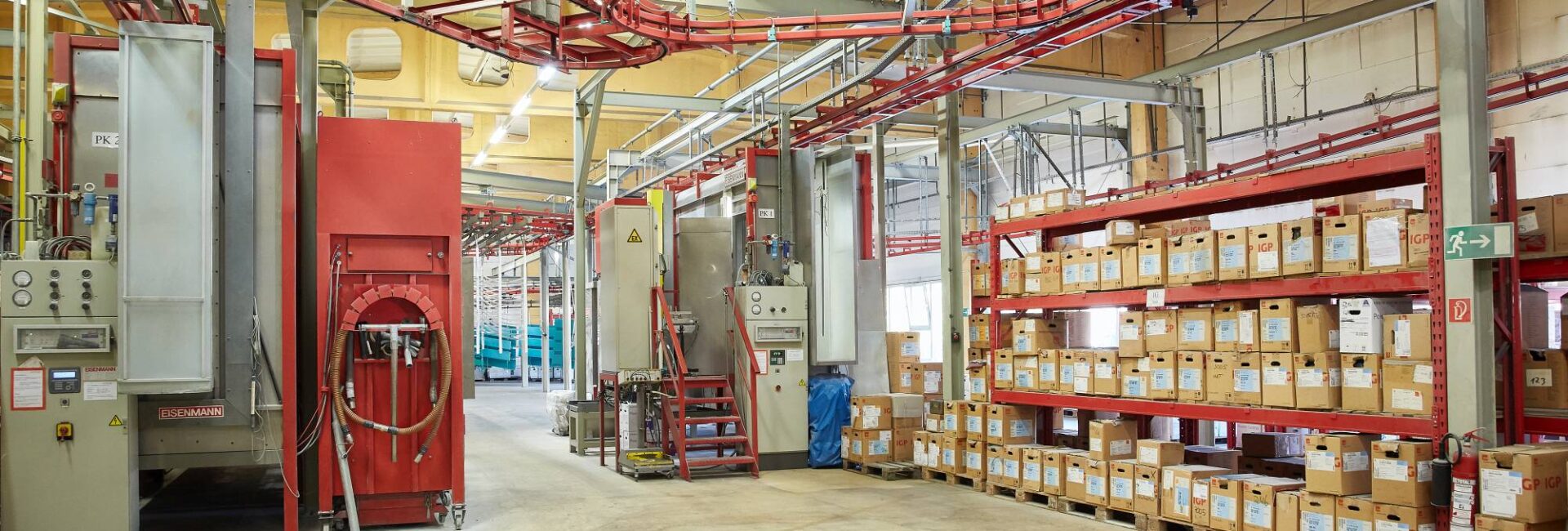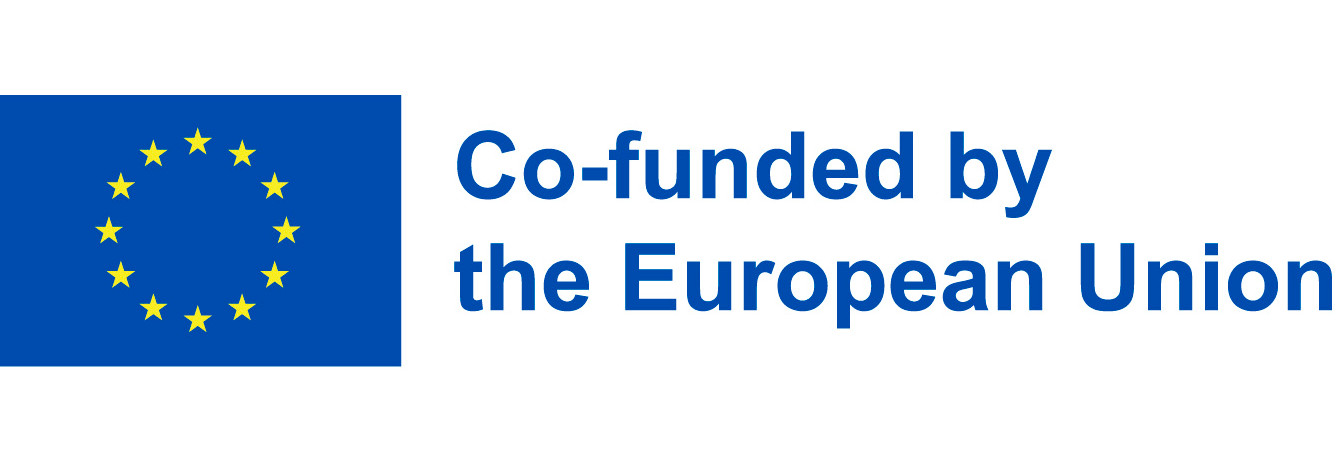Good corrosion protection with mechanical resistance
In powder coating, the electrically grounded metal surface is coated with an electrostatically charged powder coating in only one coating process. Polyester-based powder paints are used for the coating; the entire process is completely solvent-free. The powder coating particles adhering to the metal surface are then melted and cross-linked (colloquially “baked”) in the powder dryer at approx. 200 °C, i.e. the individual particles fuse into a smooth, uniform surface. Our powder dryers are heated by an innovative micro gas turbine which simultaneously generates electricity and uses heat.
To ensure excellent paint adhesion later on, a conversion layer is already created on the aluminium surface during the pre-treatment process by means of an innovative chromium-free passivation. For environmental reasons, chromating is no longer used here.
As a result of the above-mentioned process, a highly resistant surface is obtained. The paint layer is much more flexible than aluminium (in case of plastic deformation the metal cracks first, then the paint layer). Our modern and automated continuous coating system enables highest quality and efficiency. The overspray produced during the coating process is recovered and fed back into the powder coating cycle.
Vorteile:
- good corrosion protection for aluminium
- good mechanical resistance, especially with plastic deformation such as bending
- high resistance to weathering and chemicals
- expressive and versatile surfaces
- wide colour palette
- good electrical insulation
Restrictions:
- Fastening points remain incorrectly coated and should lie outside the field of vision or use (subsequent separation)
- for welded or bailing assemblies, drain holes must be provided
- when coating pre-assembled assemblies, all components must be temperature-resistant; for the baking process, they are heated to 200 °C for 30 mins.
- As a matter of principle, assemblies should be coated in individual parts so that trapped chemical residues are completely avoided and thus optimum corrosion protection can be built up
- the corrosion protection for parts with difficult-to-access surfaces can be considerably improved by pre-anodising if desired (link for pre-anodising)
- Foamed components/thermally insulated profiles cannot be coated in the powder dryer because of the significant expansion. (profiles are damaged or destroyed in the powder dryer)
- Pre-anodising against filiform corrosion is recommended for use near the sea or other environments with a high chloride content.


